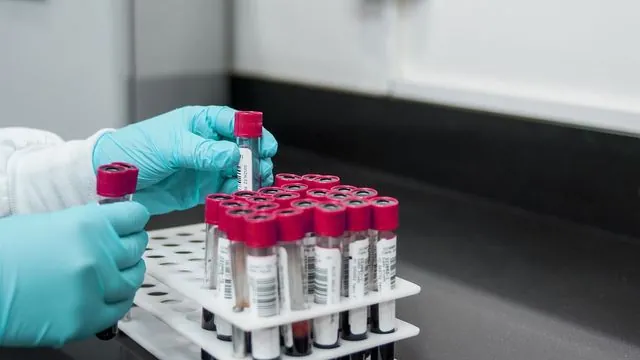
Revolutionary Polymer Coating Supercharges MXene Air Quality Sensors: 200% Longer Life and Regeneration!
2025-07-11
Author: Jia
Did you know that everyday items like cleaning products, candles, and cosmetics could be releasing harmful formaldehyde into your home? This colorless, odorless chemical can become dangerous at concentrations exceeding 0.1 parts per million, posing serious health risks.
In a groundbreaking development, researchers at Carnegie Mellon University have unveiled an innovative, budget-friendly air quality sensor designed to monitor indoor formaldehyde levels effectively. What sets this sensor apart? A state-of-the-art polymer coating on its MXene-based structure that not only boosts its lifespan by an astonishing 200% but also grants it the remarkable ability to regenerate when performance starts to dip.
MXenes are a class of materials famed for their exceptional electrical properties and versatility, making them prime candidates for applications in energy storage and gas sensing. However, one major hurdle has been their vulnerability to oxidation, especially when exposed to air and humidity.
Thanks to the latest research published in Science Advances, this challenge has been tackled brilliantly. The team, led by Professor Reeja Jayan, used a cutting-edge process called Chemical Vapor Deposition (CVD) to encase the MXene sensor in a protective polymer layer. In an eye-catching analogy, Jayan describes the process as akin to condensation forming on an icy drink on a hot day.
Originally, the MXene sensor had a lifespan of just over two months. However, with the new polymer shield, it remarkably operated for more than five months without losing accuracy.
As the team monitored the sensor's performance, Ph.D. candidate Shwetha Sunil Kumar observed an intriguing phenomenon. "The polymer layer was triggering a chemical reaction that allowed the sensor to detect even lower levels of formaldehyde!" Kumar explained. "This led us to speculate whether we could regenerate the sensor's capabilities by fostering the formation of even more responsive molecules when it started to degrade."
To their amazement, they discovered that introducing humidity to the sensor could restore approximately 90% of its sensing ability at the end of its lifespan.
"The polymer layers we created are dielectric and highly insulating, serving as robust barriers," said Jayan. "This provides our sensors with both stability and sustainability."
Extensive simulations run by Assistant Professor Jerry Wang confirmed the polymer's effectiveness, showing how it effectively hinders the permeation of oxygen and moisture, protecting the sensor from premature degradation.
Jayan is excited about applying this innovative technology to enhance the longevity and safety of various devices, including batteries.
Albert Presto, the director of the Center for Atmospheric Particle Studies at CMU and co-author of the study, envisions a future where indoor air quality sensors could be seamlessly integrated into our daily lives. Imagine sensors that can be connected to smartphones or embedded in our clothing, consistently monitoring the air we breathe and ensuring a healthier home environment!



 Brasil (PT)
Brasil (PT)
 Canada (EN)
Canada (EN)
 Chile (ES)
Chile (ES)
 Česko (CS)
Česko (CS)
 대한민국 (KO)
대한민국 (KO)
 España (ES)
España (ES)
 France (FR)
France (FR)
 Hong Kong (EN)
Hong Kong (EN)
 Italia (IT)
Italia (IT)
 日本 (JA)
日本 (JA)
 Magyarország (HU)
Magyarország (HU)
 Norge (NO)
Norge (NO)
 Polska (PL)
Polska (PL)
 Schweiz (DE)
Schweiz (DE)
 Singapore (EN)
Singapore (EN)
 Sverige (SV)
Sverige (SV)
 Suomi (FI)
Suomi (FI)
 Türkiye (TR)
Türkiye (TR)
 الإمارات العربية المتحدة (AR)
الإمارات العربية المتحدة (AR)